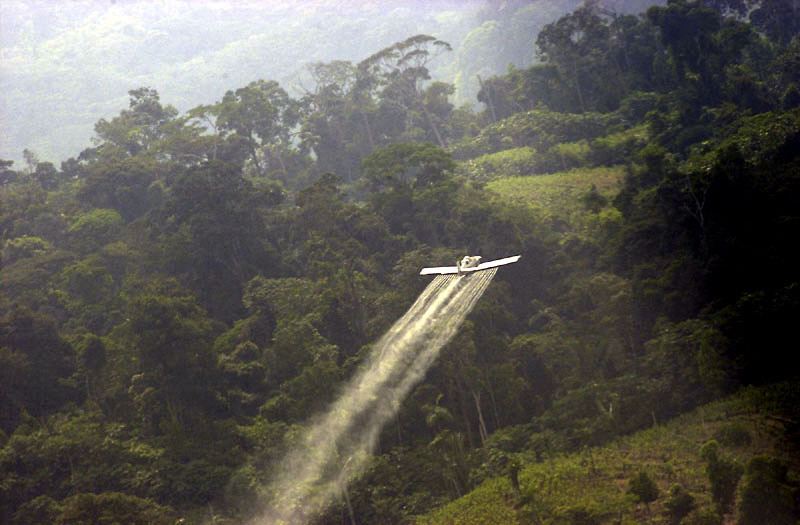U.S. Influence on Colombian Policy Making
Colombia’s decision to end its aerial fumigation of illegal coca plants is a significant shift in Colombia – U.S. relations.
One of the questions I sought to answer on my trip to Bogotá is how much influence does the United States have on Colombian policy making. It was just last week, that the journalist Laura Gil suggested the current level of U.S. influence would be determined by Colombia’s ultimate stance on coca fumigation. I admit that I am surprised how quickly and the manner in which this issue was resolved.
It was merely two weeks ago that Colombia’s Health Minister Alejandro Gaviria called for an end of the fumigation program given the environmental and health effects of the chemical glyphosate — known commercially as the weedkiller Roundup. At the time, it was clear that the Colombian President’s, Juan Manuel Santos, own administration was divided. While other high-ranking officials also called for an end to aerial fumigation, many, including the Inspector General and the Defense Minister, were very vocal in their support for the continuation of the current policy. Moreover, there was a great deal of pressure from the United States for continuing ariel spraying, including an op-ed article in one of Colombia’s largest newspapers, El Tiempo, by the American ambassador in Bogotá, Kevin Whitaker. Therefore, it was unclear what stand Santos would ultimately take on the issue.
Aerial fumigation of illegal coca plants, used to make cocaine, was a core component of Plan Colombia — the U.S. – Colombia security initiative that went after narco-trafficking and left-wing insurgencies, such as FARC. Plan Colombia brought billions of U.S. dollars to the country in addition to military technology and equipment. The link between ariel fumigation and Plan Colombia is even more apparent when taking into account that a Colombian district court in July 2001 had ordered an immediate halt to aerial fumigation, threatening the continuation of U.S. funds and assistance to Colombia. In a letter to President Pastrana, the mayors of 19 municipalities urged for an end to the spraying program, complaining of health effects to the local population.1 The Colombian government decided to continue aerial fumigation despite these hurdles.
To be clear, this new policy will not open a major rift between Colombia and the United States. It is, however, a signal of a much more independent Colombia in a post-Plan Colombia world. With the final stages of a peace agreement with FARC being worked out in Cuba and an influx of Chinese money in the region, the balance of power between Colombia and the U.S. has shifted. It demonstrates that influence over policy making ends when the money stops flowing in.
In a related thought: several Colombian ministers mentioned that the U.S. was funding Colombian military personnel in Central America to assist these countries in dealing with their own narco-trafficking violence. I wonder if Colombia’s decision will affect future funding of this program. It certainly seems that it may necessitate a new anti-drug strategy on the part of the United States in Latin America.
For analysis on why the end of aerial fumigation appears to be a positive development, I recommend the following articles.
- The futility of coca eradication from The Economist
-
“COLOMBIA: COURT SUSPENDS AERIAL-FUMIGATION PROGRAM..” The Free Library. 2001 Latin American Data Base/Latin American Institute 7 May 2015 http://www.thefreelibrary.com/COLOMBIA%3a+COURT+SUSPENDS+AERIAL-FUMIGATION+PROGRAM.-a076962779 ↩
